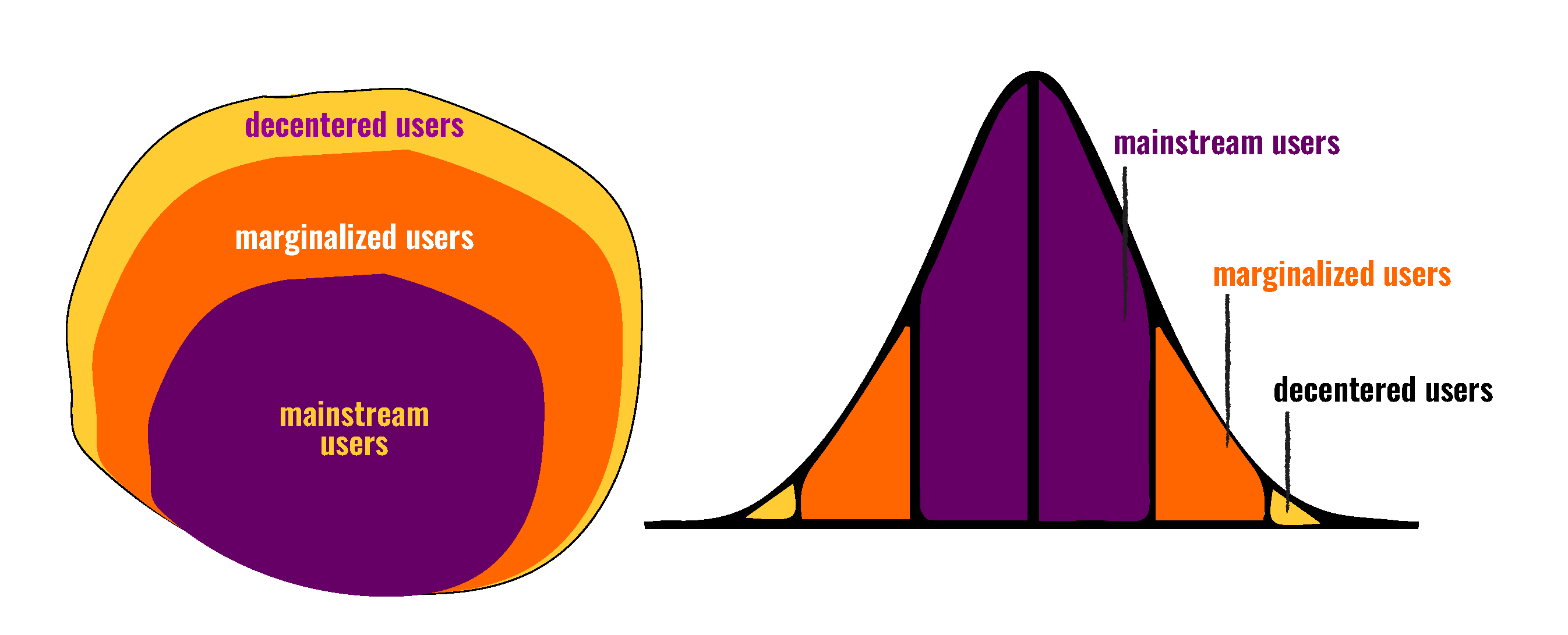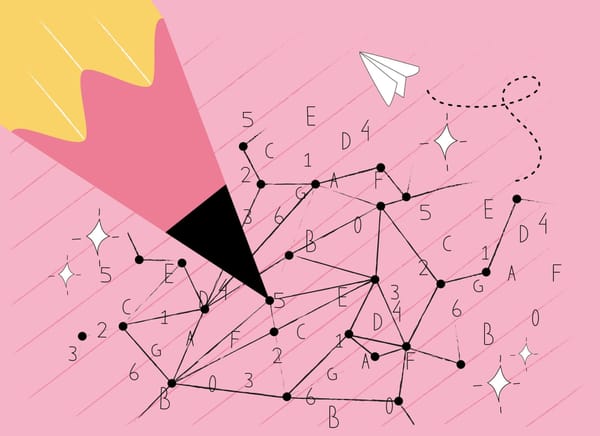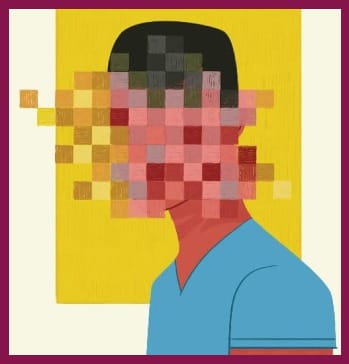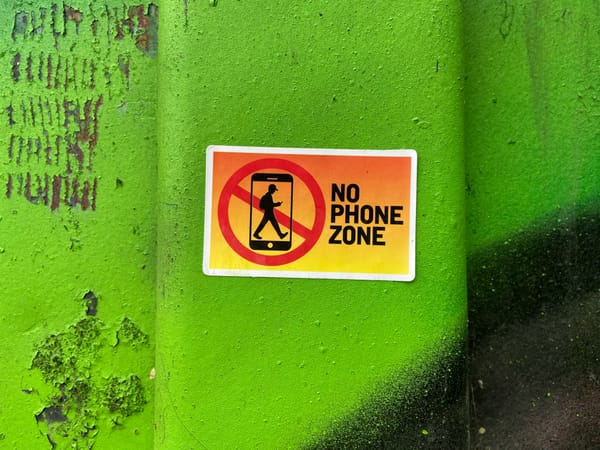How to Ensure Tech Does Not Reproduce Our Worst Selves: Meet the Decentered
Identifying decentered communities is not a niche concern, but a method for uncovering how systemic violence operates.

What links the policing of queer Egyptians and Sudanese refugees in Cairo?
How are the fears of an Iranian woman who once navigated the morality police in Iran echoed in those of her Black son-in-law, wary of driving through certain towns in the US?
How do you explain to a child that the “bad guys” often wear uniforms, and the people behind bars are not always the ones who did harm?
Turns out the answer to all of those questions are remarkably similar.
Anyone who has been part of a decentered group at one point or another quickly grasps the parallels. As we watch the freedom flotilla to Gaza create momentum and the LA resistance meet National Guard troops in their own city, the connections between decentered groups are becoming painstakingly clear.
The often invisible lines of policing or state authority maintain their power — and encourage silence and isolation — when people do not connect their own experiences to those of others. The international overlaps of surveillance, targeting, and enforcement are deeply interwoven, both in method and in lived experience.
The Iranian woman falls quiet when connecting her fear of being pulled over in Tehran for wearing the “wrong” clothing to her Black son-in-law’s anxiety over a busted taillight in an American town. The Sudanese refugee in Cairo clutches the same kind of phone that links a queer Egyptian to their chosen family, both knowing it can be turned against them in an instant. The child who is taught that police are there to protect and serve must eventually learn to ask, “to protect and serve who?”
People living distant lives and histories are still deeply connected over the same police violence, just in different uniforms — which is why it is vital to properly identify the decentered when we discuss those facing the heaviest violence at the hands of power. They are communities to whom the state not only fails to offer protection but actively persecutes. In other words, they are not only marginalized, but also criminalized.
These are also the communities that often have the experience and the knowledge needed to first and foremost understand what is happening on the ground. From there, they know how to flag design gaps in technology or policing simply because they have had no choice but to navigate state harms. Ironically, they are often the ones who are sidelined in processes that they should be leading.
“I tell people that all the time, like literally, you know, we are closest to the problem, so we are also the closest to the solutions.” said Andre Apparicio, Reentry Strategist for the incarcerated, who we spoke to for our upcoming report.
In the Design From the Margins (DFM) methodology, the definition of “decentered” does not look narrowly at the design and impact of the technology in question. It encompasses the broader historical, legal, political, social, and institutional contexts that surround and impact it. Recognizing the systems of control that reinforce racism, white supremacy, imperialism, militarism, and colonialism is essential to identifying who bears the heaviest harms.
The position of decentered communities at the fringes is not an accident, but a product of the use of state and corporate power who gain from their placement: decentered people have been moved from their position of central importance.
There are methods in identifying who are the decentered. Locally, decentered communities are often those most targeted by broadly worded legal frameworks that are then applied in clearly discriminatory ways. Think anti-terror, national security, immigration, public nuisance, morality, and racialized criminal laws. These mechanisms consistently criminalize already marginalized groups under the guise of safety, order, or morality.
But the patterns are recognizable: Who is treated as a threat simply for existing? Who is most often surveilled, detained, or profiled? Who is framed as deviant, disorderly, or dangerous — and rendered punishable by their presence alone? These questions expose how harm is legitimized through law and normalized through design. Identifying decentered communities requires tracking how legal and technological systems are weaponized to target those already made vulnerable.
Some communities are decentered in most places around the world. Internationally, examples include: Indigenous and native nations, Black and other BIPOC communities, LGBTQ people (especially trans individuals), sex workers, Muslim and Muslim-associated communities, and refugees, undocumented migrants, and stateless or displaced people.
To date, the decentered communities and advocates we have been doing documentation with for our upcoming reports include, but are not limited to:
- Palestinians living under Israeli Apartheid and actions of genocide
- Tigrayans impacted by genocide and war in Ethiopia
- Dalit and lower castes in India and Kashmiri communities
- Muslim communities targeted under anti-terror and national security laws
- Sex workers and LGBTQ communities in MENA, Africa, and the US
- Black, Indigenous, and Latinx incarcerated people in the US
- Disenfranchised communities targeted under El Salvador’s 'war on gangs'
- Border and migrant communities, including in Kenya and Mexico
- Migrant workers in the kafala system in the Gulf
- Rights defenders, particularly women and ethnic minorities, in Iran, and
- Imprisoned protestors and advocates in numerous countries
What they have in common is being on the receiving end of state-sanctioned, blanket-targeting and punitive power with little to no protections. These are the communities we center in DFM, and we will continue to bring in their expertise while actively working to define and uplift them in the spaces we operate. It is essential to move beyond abstraction and name clearly who stands at the heart of this work.
Once identified, it then becomes imperative to understand the very real mechanisms that states use for this persecution — which in 2025 — heavily relies on the use of technology, whether high or low tech, and how they are used. In our draft methodology for De-weaponizing tech, we break down how technology must be built with consideration of these experiences if there is any chance to break the cycles of harm — and to build better tech futures.
"Most of the time, they don’t have the information upfront after they arrest you, they get it through your phone, your computer, whatever you're using. [...] But twenty years ago, we were only talking about places like Iran, North Korea, Sudan, Palestine," said one of our interviewees, an artist, activist, and ex-political prisoner in Iran. "Now, they see it's everywhere not just us. Look at what’s happening in Europe: how they’re arresting and tracking pro-Palestinian students, surveilling protests with cameras. What I’m saying is, this isn’t just a Global South issue anymore. It's a global one.”
Systems and tools that prove “useful” against decentered groups are frequently later rolled out against broader populations. Technology designed for war and prisons can become so normalized that it quietly integrates into everyday life, extending systems of control far beyond their original contexts.
“I feel like a lab rat, in a sense, when I use those tablets, the wall phones, compared to just actually talking to my family, friends […] It's like they only want to study us just to see, okay, how much punishment can we really inflict on these people and how does this punishment affect them compared to this [other] form of punishment,” Sheron Edwards, a musician and activist for prison reform who is currently incarcerated in the United States, told us. He is serving an absurd 40 year sentence for a robbery charge, due to the abusive use of dual sovereignty (sign his petition here).
Halfway across the world, Saleh, a Palestinian ex-prisoner, lawyer, and advocate, used similar language. “It’s a laboratory. New technologies are tested on Palestinians before selling it. We are sure of this,” he said. He has been imprisoned by Israeli authorities numerous times, for a total of 11 years of his life.
The language of experimentation runs through the experiences across the globe.
“Palestine has become a petri dish for all sorts of experimentation,” said Marwa Fatafta, a Palestinian writer, researcher and policy analyst who leads Access Now’s policy and advocacy work on digital rights in the Middle East and North Africa (MENA) region. “Israeli companies with secretive contracts from the Ministry of Defense, deploy technologies, prototype their enhancements, and then market them for export.”
By beginning from the margins, we identify potential weaponization early. This isn’t just protective, it’s diagnostic. It surfaces design failures that are rarely identified, centers the communities most impacted and most vital in resisting these harms, and challenges the narratives that dehumanize them.
Criminalization and these practices of control reshape life. But it can also reshape design. Not to build around it, or despite it, but because of what it reveals. Building with criminalization as a lens clarifies the gaps in our technologies and even tech policies. It is how we build tech that protects, rather than polices.
Note from Afsaneh Rigot
The final version of our Methodology to De-Weaponize Tech will be launched soon, along with a summarized version; a massive thanks to the many experts whose insights and feedback further shaped this work. Our upcoming report, examining the rise of authoritarianism from the margins, will also be released in the coming quarter.
Over the past year, we have undertaken this work and research in collaboration with both experts and decentered communities around the world. We are deeply grateful to those who trusted us with their experiences and knowledge. While our reports will highlight key findings and paths forward, behind the scenes we continue working to push back against tech-driven harms and push for the implementation of harm-reduction measures where possible some of which you’ll see soon.
Power uses technology to cage us — physically and digitally — but we build communities and futures that reject this logic. We create systems of care, not control. As global power grows more violent and extractive, it is those historically cast to the margins who continue to lead the resistance, and whose wisdom shapes the path forward. We are not criminals in the eyes of our people, only in the eyes of those who seek to control and exploit us. Our fight for survival is not just for ourselves, but for everyone, and for those yet to come. As new measures continue to come out that affect our communities and our team directly, we’ll continue to do our work and push back.





